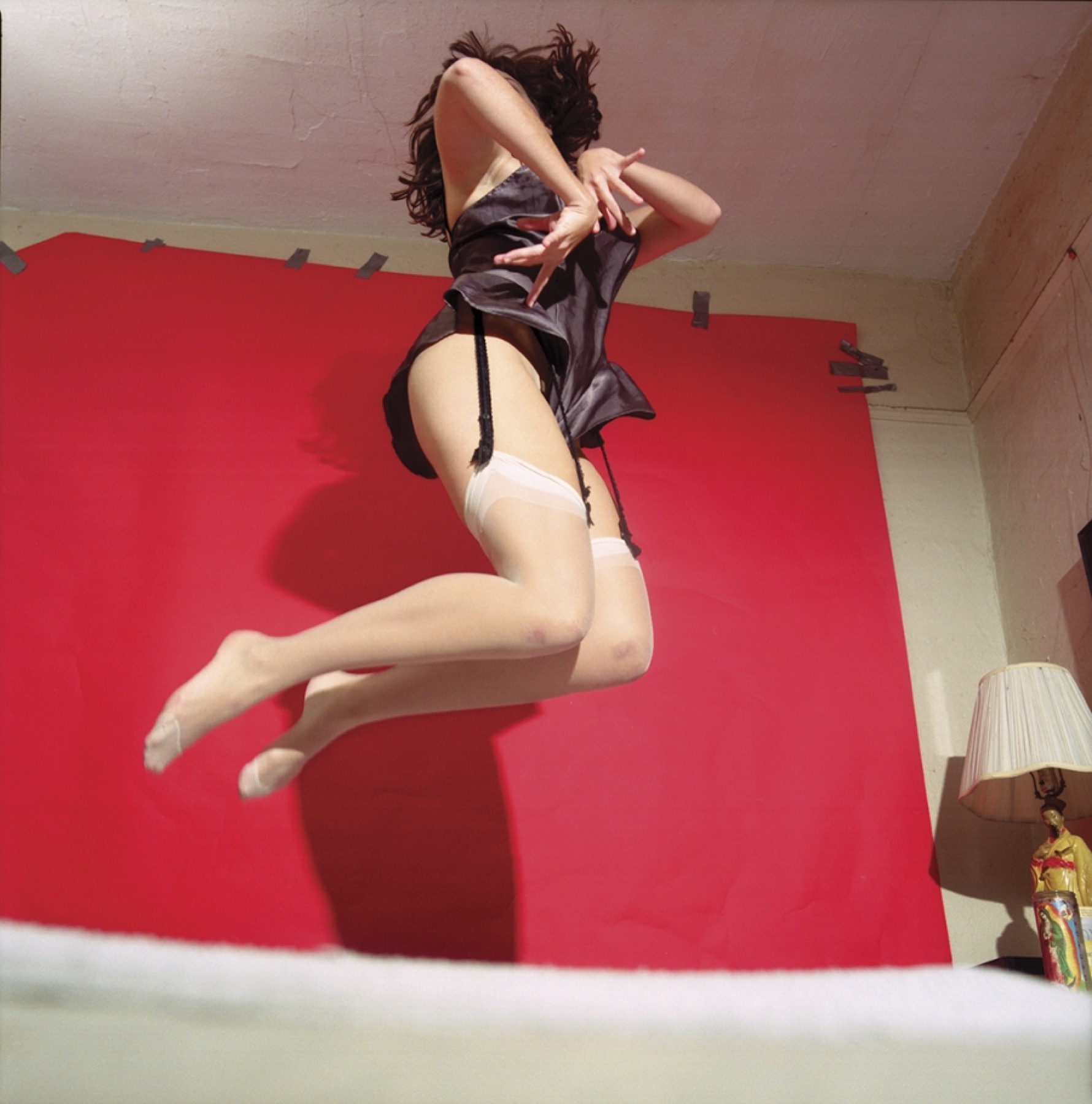
Kelly Hogan in her bedroom (1997) | All photographs by Chris Verene
When the Fire Broke Out
By Abigail Covington
It is said that when Confederate General John Bell Hood torched a reserve supply train idling on tracks near the eastern edge of Atlanta, he created the largest explosion of the Civil War. So loud was the blast that Union Major General William T. Sherman heard it all the way in Jonesboro, twenty miles south. At this moment Sherman declared, “So Atlanta is ours, and fairly won.” The fire signaled to Sherman that Hood, in an effort to contain the collateral damage of Atlanta’s imminent capture, was destroying the city’s strategic assets before retreating. Chief among those assets was the Confederate Rolling Mill, which was responsible for producing rail track, cannons, and two-inch sheets of iron for Confederate Navy vessels. By the time Sherman arrived in Atlanta on the morning of September 2, 1864, the Confederacy’s second-largest center of production had burned to nothing more than a vast swath of charred land. For nearly twenty-five years afterward, those scorched acres of southeast Atlanta lay barren and vacant. Then, in the 1880s, a German immigrant named Jacob Elsas developed the land and atop the ashes of the Confederate mill built a new mill. The new mill was named the Fulton Bag and Cotton Mill, and much like its predecessor, it quickly became a bastion of productivity.
Jacob Elsas didn’t have to do much recruiting when it came to filling his mill with workers. At its peak, he employed nearly 2,500 men, women, and children, all of whom lived in tightly packed shotgun houses that, when viewed from above, looked as though they sat under one endless eave. The workers, many of whom came from the North Georgia Appalachians, eventually started calling their settlement Cabbagetown, on account of the putrid stench that hung in the air from the constant boiling of the cruciferous vegetable. The Cabbagetown residents became deeply familiar with hardship, working long hours for poor wages, and they sought refuge in their Appalachian traditions—particularly music.
The decades passed. In 1914 and ’15, the mill workers went on strike, but little changed. The company expanded during the Second World War, and Elsas established an on-site nursery. Technological advancements presaged the closing of the Fulton Bag and Cotton Mill, and in 1978 it locked its iron gates for good. With their employer no longer in operation, many of the mill workers had no choice but to desert their sequestered village. For those who couldn’t afford to leave, the outlook was increasingly bleak. There weren’t many other businesses in the area, and for every house that was inhabited a dozen more were swiftly abandoned. Cabbagetown became a deeply depressed part of Atlanta, but the neighborhood continued to bring forth music, as it had always done. The folk singer Joyce Brookshire—who stayed in the neighborhood, working tirelessly with friends to ensure the well-being of her fellow lintheads who also stayed behind—hosted jam sessions at her house for local musicians, using music as a salve as she watched the neighborhood decline: “We’d sing old songs / About our mountain home / Our music would see us through.”
Other parts of southeast Atlanta were flourishing. A mini artistic renaissance swept through the area in the mid-eighties and brought with it new, alternative music venues, some fashioned out of abandoned bank vaults and warehouses. Bands were everywhere. Little Five Points soon became home to some of Atlanta’s biggest venues. It was only a matter of time until people discovered the small, musically inclined and struggling neighborhood next door.
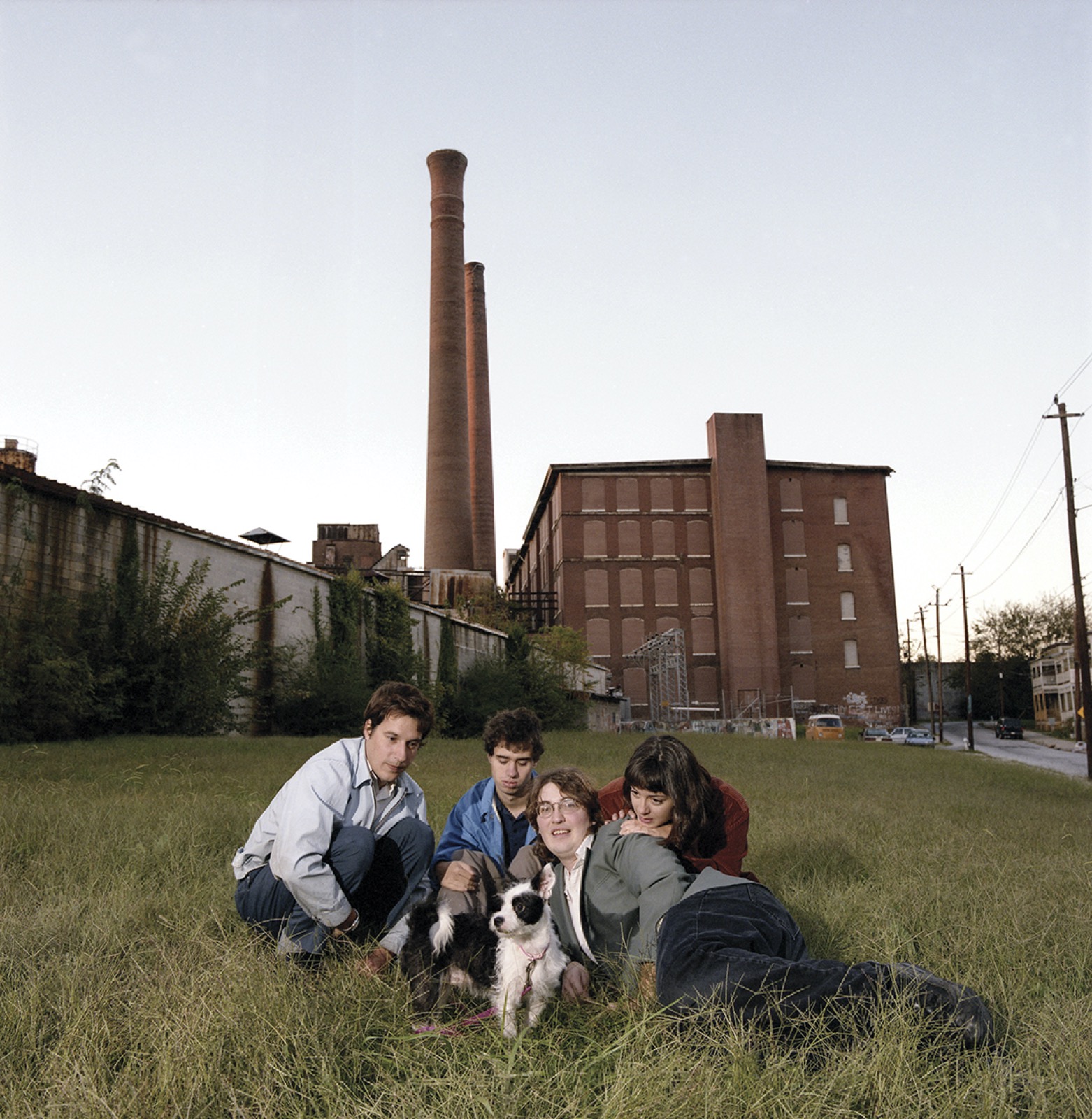 The Rock*A*Teens and the Cabbagetown mill (1995)
The Rock*A*Teens and the Cabbagetown mill (1995)
When I first arrived in Cabbagetown, on Memorial Day weekend in 2015, I took a quick tour of the area before meeting with a guitarist named Bill Taft, who played music here in the eighties and nineties. I visited the long-abandoned Fulton Bag and Cotton Mill, which has been transformed into a gated community of lofts stylishly designed to blend in with the ruins. Many of the mill’s crumbling exterior facades had been preserved, but they look anachronistic now, flanked by modern touches like an enormous swimming pool and a parking garage. A few blocks south is Little’s Food Store, which has been open since 1929, surviving decades of economic vulnerability. I met Taft next to Little’s, at a table outside of the Carroll Street Cafe.
Taft was a member of a band called the Chowder Shouters, and his bandmates, Eric Kaiser and John Thomas (called JT), were among the first people to move into the neighborhood after the mill closed and many of the lintheads left. They came in 1986 and Taft, a classmate of JT’s from Emory, arrived shortly after. He’d heard about Cabbagetown “on the news, as that place where cops shoot kids at night,” he told me. Quick to befriend them was poet and performance artist Tim Ruttenber, who’d moved to the area the year before. Ruttenber was a transgressive guy: he had been expelled from high school and college; he’d spent years in a North Carolina commune, in a meditative state that was punctuated by bouts of thorough drug experimentation. He often came to Atlanta to visit his brother Jim. Ruttenber came to love the city, moved there, and eventually started hanging out in Cabbagetown at night, working during the day as a construction worker. He and the Chowder Shouters soon began performing together, and from their raucous and creative collaborations emerged Ruttenber’s onstage persona: Deacon Lunchbox.
According to Ruttenber, Deacon Lunchbox was “a socially conscious redneck poet using backwoods Southern imagery to espouse a progressive political stance.” Deacon Lunchbox wasn’t a radical departure from Ruttenber’s own persona; he was an amplification, a way for Ruttenber to act bold and defiant in front of an audience. Through Deacon Lunchbox, Ruttenber channeled his keen sense of social justice and appreciation for irony. When he performed, he would strap plastic breasts to his chest and brandish a chainsaw, speaking in a deep Southern drawl, full of ire about the despicable nature of prejudice. Offstage, Ruttenber was a gentle bear of a man, full of compassion. The support he lent to his friends’ bands when he opened for them helped buoy the developing music culture. Ruttenber was once featured in a WSB-TV human-interest story and, upon being asked what the secret to his poetry was, retorted, “Failure. Failure is where it’s at.” This idea left an indelible impression on Taft, who told me, “I thought of it as a tremendous opening of my consciousness.”
By 1990, many young people—primarily friends of friends of Taft and JT—flocked to the neighborhood, united in their desire to explore music. Atlanta musicians like Kelly Hogan, Chris Lopez, Coleman Lewis, Chan Marshall, and dozens of others moved there, occupying the houses where Jacob Elsas’s mill workers had lived. The musicians cross-pollinated, and informal DIY bands started sprouting up like weeds between cracks in the pavement.
Kelly Hogan was the neighborhood’s prized vocalist; her passionate, sultry voice endeared her to the entire community. She sang with many bands, most notably the Jody Grind—which fused disparate elements like jazz and country and cabaret and punk. The Jody Grind’s music shouldn’t have worked, but it did, thanks to Hogan’s singing. It’s mesmerizing. On parts of the band’s debut album, One Man’s Trash Is Another Man’s Treasure, the instrumentation melts in the wake of Hogan’s voice and creates a beautiful, harmonious wash for her to sing over. The band’s version of Ellington’s “Mood Indigo” is nothing more than the steady and pared-back strumming of Taft’s guitar and the soft skimming of a hi-hat. Concurrently, Hogan’s voice sinks into her lowest register then soars into the upper octaves of her range to spellbinding effect. “We were all just in love with making music,” Hogan told me of these years.
Two other important bands at this time were the Opal Foxx Quartet and Smoke, vehicles for the songwriting and theatrics of Robert Curtis Dickerson—a delightfully unhinged and frighteningly insightful drag performer from Jonesboro, Georgia, who went by the name Benjamin. If Tim Ruttenber was Cabbagetown’s beloved, redneck father, then Benjamin was its nurturing, cross-dressing mother, and the other members of the Opal Foxx Quartet their ragtag group of children. A mix between a circus and a band, the Opal Foxx Quartet’s primary purpose was to write and play loose arrangements that matched Benjamin’s coarsely sung poetry. Benjamin began Smoke a while later, after he pared down the Opal Foxx Quartet. “Smoke is the sound of Cabbagetown to me,” Hogan said. She’s right that Smoke’s sound personifies the scene: the music is eerie and crooked, and Benjamin’s craggy voice and brooding, swollen eyes seem to embody the hardship that dogged the neighborhood’s residents.
But despite the excitement around the Jody Grind, the Opal Foxx Quartet, Smoke, and all the other collaborations happening in Cabbagetown in these years, it was a later band called the Rock*A*Teens that became a true centerpiece of the scene. Smoke may have personified Cabbagetown’s vibe, but it was this band that preserved its history. As Atlanta-based journalist Doug Deloach told me: “To tell the story of the Rock*A*Teens is to also tell the story of Cabbagetown and all the bands that came before them.”
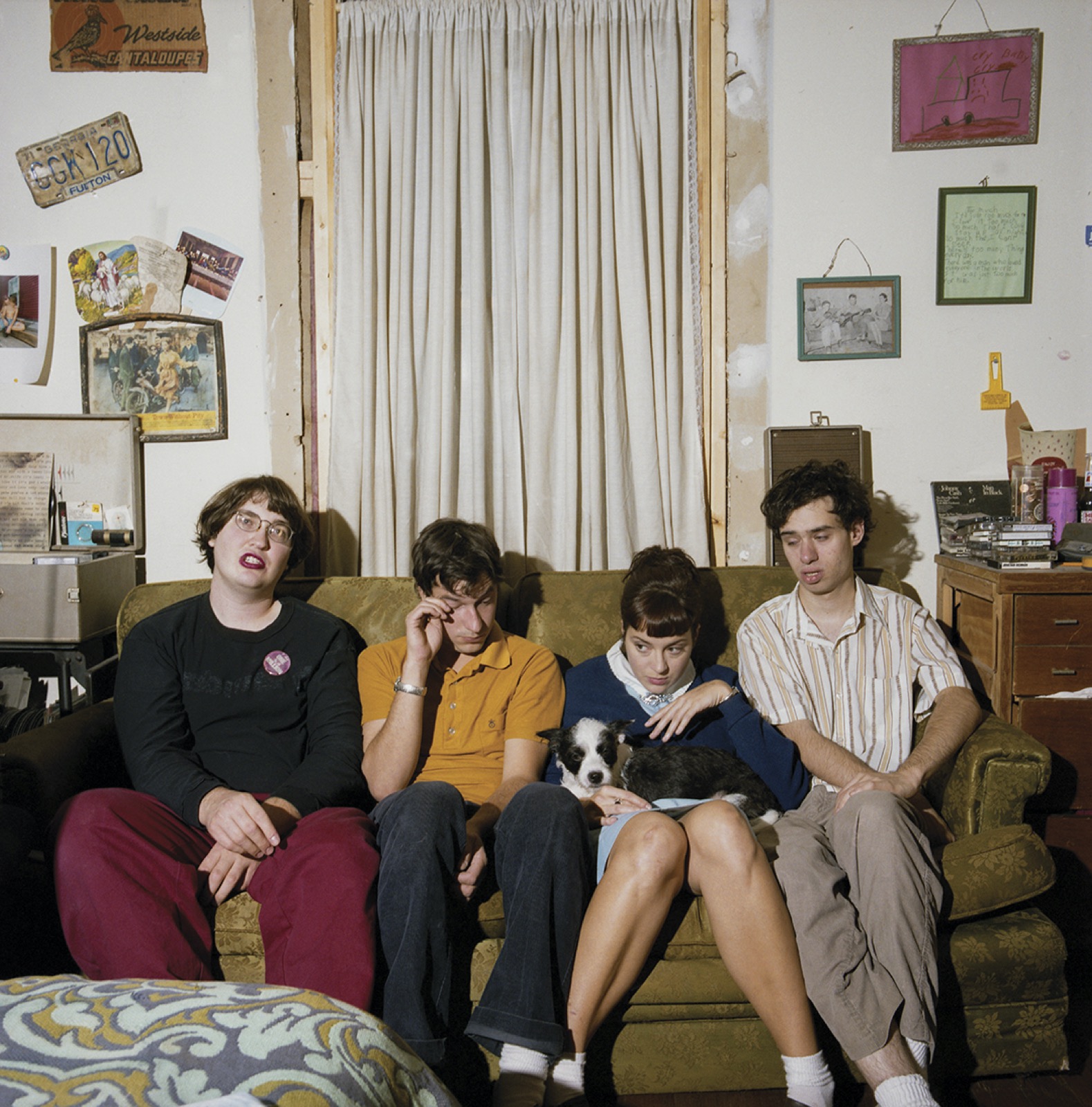 The Rock*A*Teens with Augie on Kelly’s couch (1996)
The Rock*A*Teens with Augie on Kelly’s couch (1996)
The Rock*A*Teens came along in the early nineties, after a string of tragedies rocked the Cabbagetown community and unraveled several of these bands. One night in 1992, along a lonesome stretch of Highway 65 near Greenville, Alabama, Tim Ruttenber and two members of the Jody Grind—their bassist, Robert Hayes, and drummer, Rob Clayton—were killed instantly when a drunk driver crossed over a grassy median and hit their van head-on. The group was on its way back to Georgia after performing a series of shows in North Florida. Bill Taft and Kelly Hogan had opted to stay in Pensacola and drive back the next morning; they didn’t learn of the tragedy until they returned to Cabbagetown the next day. Taft once detailed his reaction in Creative Loafing: “I got to my house and my wife came out and I knew the minute I saw her something bad had happened. She told me, and I just stood there and started crying.”
For those who knew Ruttenber, Hayes, and Clayton, the accident was unfathomable. “How could Tim be gone?” JT once reflected. The traumatic end to the Jody Grind and the sudden absence of Deacon Lunchbox affected even those who didn’t live in Cabbagetown. Record producer and Indigo Girls member Amy Ray told me that the “car accident created this overarching sadness in Cabbagetown that just snowballed. It was so tragic and shocking.”
Many of the musicians who played in the Opal Foxx Quartet were affected, too, especially future Rock*A*Teens front man Chris Lopez and his dear friend Allen Page. Page was a versatile drummer who also played with Lopez in Cabbagetown’s metal bands: Dirt, Seersucker, and the New Centurions, a group that began when Benjamin ended the Opal Foxx Quartet. He was a bit of a wild man—once, after band practice, he shot a hole through the ceiling of Lopez’s house at 711 Wylie Street. “Allen was a sweet, wonderful human being and a great drummer,” Athens-based producer David Barbe told me. “But he also had a problem that got the best of him.” On February 28, 1994, right before a New Centurions gig, Page overdosed on heroin while sitting in his car, which was parked right outside of 711 Wylie. Everyone I talked to said the same thing: his death felt like lightning striking the same place twice.
Hogan is an eloquent woman, but when it came to discussing Page’s death, she was nearly speechless. “It was just—fuck, man, fuck.” She remembered simply wanting “everybody to stop dying.” I asked her what she did after Page died. She said, “We all just kept playing music.”
Taft and Hogan continued to meet up every Thursday for practice. Taft also joined Smoke. Chris Lopez stayed at 711 Wylie, and Hogan wandered there to play, too. Lopez began teaching Hogan guitar and soon they were writing together. Lopez’s friend from work, Chris Verene, eventually offered himself as their drummer and brought Justin Hughes, a young guitarist, with him. Without clear direction, the four of them jammed, Chris Lopez writing the songs. It was the spring of 1994 and what would soon become the Rock*A*Teens was still nothing more than a group of friends getting together and writing music about all they’d been through.
In telling the Rock*A*Teens’ origin story, it’s tempting to jump to obvious conclusions: They were sad so they played loud music; X happened so then Y occurred. And sometimes this hypothesis holds up. I sheepishly asked Lopez if he thought the tragedies he experienced affected his songwriting process. “I don’t really have any idea,” he said. “No more so than other things, I guess.” I could picture his shoulders shrugging over the phone. He did admit that if he hadn’t been living in Cabbagetown, “a lot of those songs would’ve never been written.” Chris Verene put it more candidly: “We were definitely united by people dying and a sense of loss.”
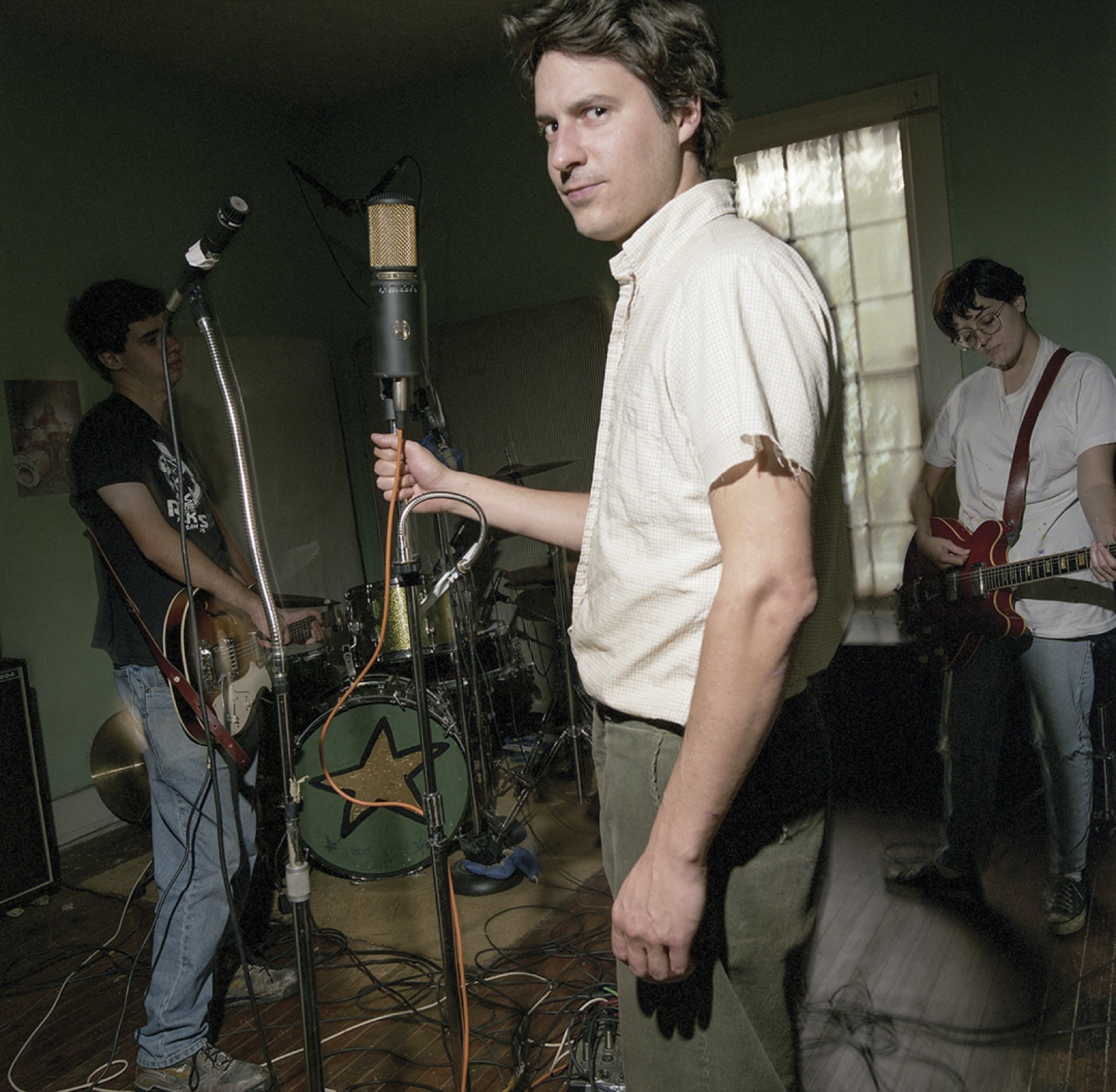 Chris Lopez at 711 Wylie Street recording session (1995)
Chris Lopez at 711 Wylie Street recording session (1995)
Despite Lopez’s hesitance to admit it, images from Cabbagetown clearly found their way into his writing—a wild thatch of overgrown kudzu wrapped around the bumper of a rotted-out car, a dingy shopping cart full of old Busch Light precariously parked in the middle of Carroll Street. So did confessions of his grief over Allen Page’s death. Lopez’s powerful lyrics demanded a band, and his three friends could sense something coming. Verene remembers that time this way: “It wasn’t a band at first. It was just us playing, but once we started putting songs together, it was electric.” The way they all tell it, the Rock*A*Teens started sort of by accident, only after realizing they had written a handful of really good songs. Verene recognized the Rock*A*Teens’ piquant flavoring and prodded them along. He even named the band. From the very start, the Rock*A*Teens were unrestrained in their outpourings. Thinking about their raucous start-up sound, I’m reminded of a Smoke lyric from the song “Awake”: “When heartache rears her ugly head, well I’ll look her in the eye and I’ll kiss her on the mouth. I’ll hold my head up high.” That’s what the Rock*A*Teens sound like—battered but defiant in the face of death.
Aiding them in their effort was Chris Lopez’s amp—an old Epiphone Futura. When it came to fulfilling the Rock*A*Teens’ rebellious reverb sound, that amp did a lot of the heavy lifting. Turned all the way up, it could create its own sporadic sonic distortions, which only furthered the on-the-fly sound the Rock*A*Teens became known for. “I don’t think we could’ve sounded the way we did without that amp,” Lopez told me. And the way they sounded wasn’t like anything else going on at the time. In the post-Nirvana alt-rock soundscape of the mid-nineties, the Rock*A*Teens were an outlier, even within their own city. Seattle had grunge, but rockabilly was the rage in Atlanta, and the Rock*A*Teens particularly enjoyed lampooning that scene. “Don’t make me go to the rockabilly ghetto / Don’t leave me behind,” Lopez shouts over a dramatic chord progression and ironic saloon-style piano plunking. While it’s spectacularly shambolic, the song is far from discordant thanks to Kelly Hogan’s punctuated vocals.
Throughout the Rock*A*Teens’ first two albums—The Rock*A*Teens and Cry—Hogan’s spare but stirring vocals act as guardrails that keep a freewheeling Chris Lopez from singing himself right off a cliff. But Hogan left the band in 1996, and it’s after then that Lopez’s voice breaks from the mold, particularly on their Merge Records debut, Baby, a Little Rain Must Fall. In those songs, Lopez sounds entirely uncaged, and perhaps nowhere in the Rock*A*Teens’ discography does he ululate more violently than on the track “I Could’ve Just Died,” a piece Herculean in both its music and lyrics. The song opens with a spine-straightening coupling—the ride cymbal and snare drum—and then barrels into a wailing wall of reverb and distortion. Lopez exhausts himself a few times and abandons this lyric before he’s able to pronounce its final syllable: “Iiiiiiiiiii, yeah I could’ve / just diiiieeeeeeeeee . . . ” He trails off before audibly inhaling and screaming it again. Lopez spares no part of himself.
There are times when I listen to this song and I imagine myself at a house party where someone has just busted through the front door and delivered urgent, buzz-crushing news—the energy that’s left is channeled into a sorrowful swivet as people start abandoning the party at breakneck speeds; I fall on my face; I pick myself back up and keep running; I search for a safe house and a couch to crash on; I am crying in the wind. By the end of the song, I am exhausted.
Though their music didn’t really have any kind of predetermined style, the Rock*A*Teens had plenty of influences—especially late fifties rock & roll and how that genre related to rhythm. Some of their songs are so fast—think Link Wray, Dick Dale, Bo Diddley. When they got onstage, “it would be even faster than we planned,” Verene said. “It required me to play at my utmost.” In clips of the band’s early concerts, you can see in Verene’s and Hughes’s wincing faces the physical effort they exerted in order to keep up with Lopez’s manic performance. Imagine taking the already hypercharged “You’re Gonna Miss Me” by the garage-psych rockers the 13th Floor Elevators and doubling the beats-per-minute. That might get you somewhere close to the pacing of “Lucia P.,” from the Rock*A*Teens’ debut album. The grandiosity of it all, the emotional lyrics, the ambitious arrangements, the cinematic imagery, the yowling—this strange combination of elements was unprecedented at the time. It’s only recently that the anthemic sound put forth by the Rock*A*Teens has come into vogue, thanks to the success of Arcade Fire.
If the Rock*A*Teens had any kind of defining feature it was their commitment to a lack of pretense. Amy Ray, who signed the group to her label, Daemon Records, said, “They had a totally different kind of ambition. They were ambitious in the moment and only about the art.” From the way they dressed onstage—usually in some uncoordinated assortment of khaki-colored garments and thick-rimmed glasses—to their own laconic explanations for their critically lauded albums, the Rock*A*Teens represented what it means to make music without an agenda, almost to an extreme. Album sales or mailing lists didn’t matter much to the band. They focused exclusively on writing music. Oftentimes, Ray felt like she was more enthusiastic about the band’s prospects than they were. Validating moments—like signing with Daemon and later getting picked up by Merge—encouraged the Rock*A*Teens to keep making music. But according to Kelly Hogan, “Those things just happened. We weren’t ever trying to get signed.”
When I asked Ray if she thought the band ever deliberately undermined their chances at success, she was quick to reply, “Not at all. They were just non-compromising and true to their community.”
The song “If I Wanted to Be Famous (I’d Have Shot Someone)” is like an anthem in that way. Its dark, wry lines could have been plastered on the entrance to Cabbagetown to ward off any opportunistic musicians with suitcases full of professional ambitions. But everyone in Atlanta who knew about Cabbagetown knew it wasn’t where you went to get famous. It wasn’t Brooklyn. It wasn’t even Seattle. If anything, it was the antithesis of those destinations. It was a place where opportunity was sacrificed at art’s altar. At the beginning of the song “Arm in Arm, in the Golden Twilite, We Loitered On . . . “ Lopez sings of a person who “doesn’t come around as much / Ever since he heard about that stuff.” By describing this friend who no longer feels safe coming around, Lopez perfectly evokes the place that friend refuses to visit—a place where harrowing incidents occur more frequently than one would like. Lopez said to me, “In my heart of hearts, I hope that these lyrics invoke a mythological place.” Except that place isn’t mythological at all. It’s just Cabbagetown.
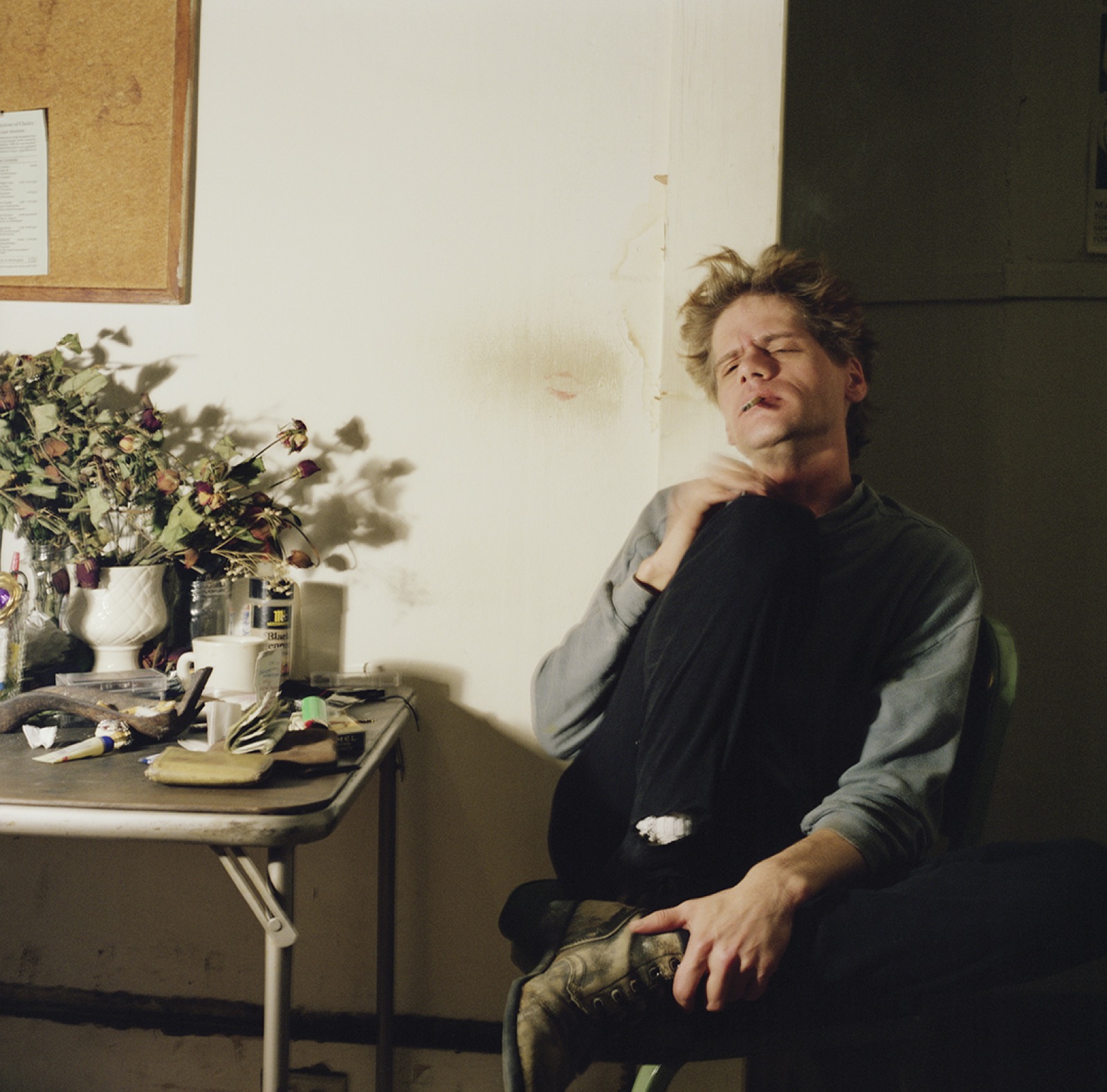 Benjamin at home (ca. 1992)
Benjamin at home (ca. 1992)
As I walked around the neighborhood in May, I saw remnants of the place that Chris Lopez had borne witness to in his songs. Many of the houses have been repainted, in pastel yellow and blue, but their porches’ floorboards remain crooked and uneven. Where there once were dusty lots, there are now manicured front lawns—but the earth beneath them still sinks in odd places. Even recent upgrades to 711 Wylie can’t completely mask its history. The low-pitched roof and humble front porch reveal its past as a tattered mill house.
Not everybody wants to revisit the past. Kelly Hogan left Cabbagetown in 1997. “I just couldn’t keep driving down the street where Allen had died,” she said to me in a tearful moment on the phone. Verene also moved away after the band signed to Merge. That left Chris Lopez alone to play the drums on Baby, a Little Rain Must Fall—after which the drummer Ballard Lesemann joined, soon followed by Will Joiner on bass. The Olympics came and went and brought masses of yuppies to the city’s less-crowded parts. Then it was 1998. The people who still lived in Cabbagetown could finally sense that their neighborhood was changing.
To borrow a phrase from Hogan, Cabbagetown in the nineties was like a “supersaturated solution.” People fell in and out of love, friends died, babies were born. Things that generally happen to most people over the span of one lifetime, across many places, had happened at warp speed to several people within a few cramped acres of land in southeast Atlanta. One more dose of pain and the whole neighborhood could combust, which it did, after Benjamin died of liver failure caused by hepatitis C on January 29, 1999. “All of us being close to Benjamin, and appreciating his art, united us in some way,” Chris Verene said. Benjamin’s death also meant the end of Smoke. For so long, Benjamin’s presence had been as towering as the smokestacks that loomed over Cabbagetown. His death turned what was already a chasm into a void, and most of the neighborhood’s remaining residents scattered elsewhere.
On April 12, 1999, the old Fulton Bag and Cotton Mill did as the Confederate Rolling Mill had done all those years before: it caught fire. The mill—the longstanding emblem of Cabbagetown’s history—was in the midst of being renovated into lofts and condominiums when the flames hit. “When did the Cabbagetown scene end?” I asked almost every person I interviewed. The answer was unanimous: “When the fire broke out.” Chris Lopez continued to live at 711 Wylie Street until 2001, long after his friends had moved—to Chicago, to New York, into the firmament, across town. But to a chronicler, a story’s ending is just as pertinent as its beginning. The fire at the mill and Benjamin’s death—these things were now as much a part of Cabbagetown’s history as the lintheads and the loss of Allen Page. Lopez had one more chapter to write, which he did, ever so nostalgically, on the band’s final album, Sweet Bird of Youth.
On this album, recorded in 2000, everything has already happened. Lopez writes in the past tense about nights when “we were young and we ran circles round all the pretty ones,” about the “town that put us under,” and about “how they left and how it stung.” Sweet Bird of Youth isn’t a defiant last stand; it’s a eulogy. The Rock*A*Teens had outlived every other Cabbagetown band and, through five albums and various lineups, reluctantly preserved the history of the neighborhood until it drew its final fiery breath. Then it was done. “Strike down the band,” Lopez mourns. “The play has closed.”
“Awake” by Smoke appears on our Georgia Music Issue CD
Enjoy this story? Subscribe to the Oxford American.

